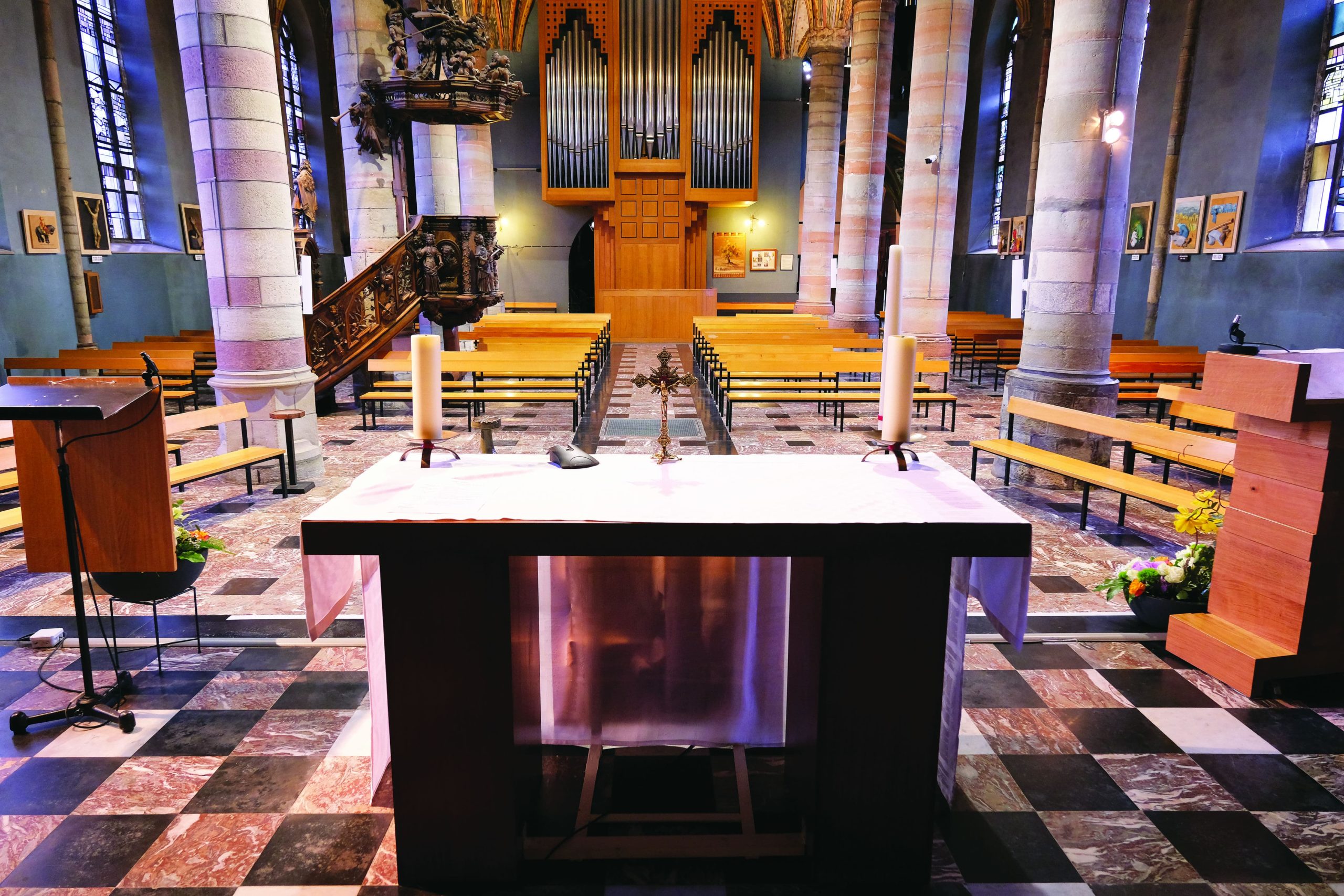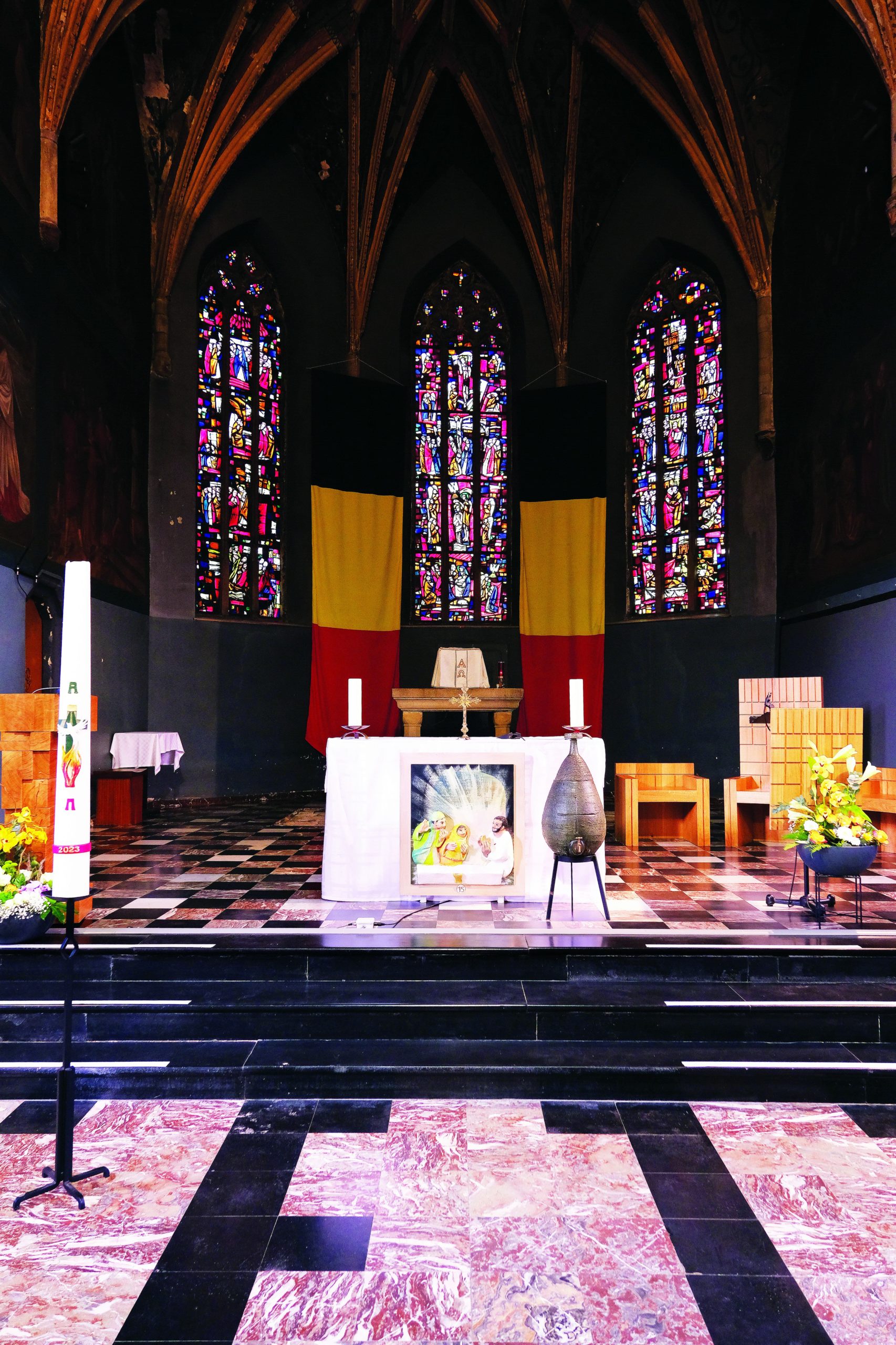L’autel et les fresques
Dans une église, l’autel est la table sur laquelle le prêtre célèbre l’Eucharistie, le moment le plus important de la messe. C’est là que l’hostie et le vin deviennent le corps et le sang du Christ par les paroles du prêtre et l’imposition des mains.
Cet autel en calcaire est probablement l’élément visible le plus ancien de l’église. Vu qu’il était trop haut pour être utilisé en l’état, une estrade lui était adossée afin que le prêtre puisse s’y rendre. L’enlèvement de cette structure a dévoilé le sol pavé de l’église d’origine. L’autel et les pavés remonteraient au 11e siècle.
Sur les murs du chœur, six peintures réalisées au 19e siècle représentent des épisodes de la vie de saint Pierre, patron de l’église. On y voit les moments les plus marquants de la légende du saint, comme le Christ lui offrant la clé du Royaume des cieux ou encore la crucifixion de Pierre, la tête en bas. Ces peintures ont été restaurées en 1999.
Het altaar en de fresco’s
In een kerk is het altaar de tafel waarop de priester de eucharistie viert, het belangrijkste moment van de mis. De hostie en de wijn worden dan door de woorden van de priester en de handoplegging lichaam en bloed van Christus.
Dit kalkstenen altaar is waarschijnlijk het oudste zichtbare element van de kerk. Omdat het te hoog was om in zijn huidige staat te worden gebruikt, werd er een platform tegenaan gebouwd waarop de priester kon staan. Door deze veranderingswerken kwam de oorspronkelijke geplaveide vloer van de kerk tevoorschijn. Het altaar en de plaveien dateren uit de 11e eeuw.
Op de muren van het koor kan men zes schilderijen uit de 19e eeuw ontwaren. Ze stellen taferelen voor uit het leven van Petrus, de beschermheilige van deze kerk en geven de belangrijkste momenten uit de legende van de heilige weer: Christus die hem de sleutel tot het koninkrijk der hemelen aanbiedt en Petrus die ondersteboven wordt gekruisigd. De restauratie van deze schilderijen dateert van 1999.
The altar and the frescoes
In a church, the altar is the table on which the priest celebrates the Eucharist, the most important moment of the Mass. It is here that the host and wine symbolizing the body and blood of Christ are transformed into the sacred body and blood through the words of the priest and the laying on of hands.
This limestone altar is probably the oldest visible feature in the church. As it was too high to be used in its present state, a platform was built against it for the priest to stand on. The removal of this structure revealed the original cobbled floor of the church. The altar and the paving stones are thought to date back to the 11th century.
On the walls of the choir, six paintings made in the 19th century depict episodes from the life of St. Peter, the church’s patron saint. They show the most important moments in the legend of the saint, such as Christ offering him the key to the kingdom of heaven and Peter being crucified upside down. These paintings were restored in 1999.


